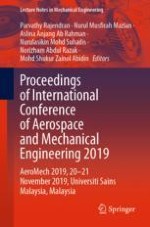2020 | Book
Proceedings of International Conference of Aerospace and Mechanical Engineering 2019
AeroMech 2019, 20–21 November 2019, Universiti Sains Malaysia, Malaysia
Editors: Dr. Parvathy Rajendran, Dr. Nurul Musfirah Mazlan, Dr. Aslina Anjang Ab Rahman, Dr. Nurulasikin Mohd Suhadis, Dr. Norizham Abdul Razak, Dr. Mohd Shukur Zainol Abidin
Publisher: Springer Singapore
Book Series : Lecture Notes in Mechanical Engineering
